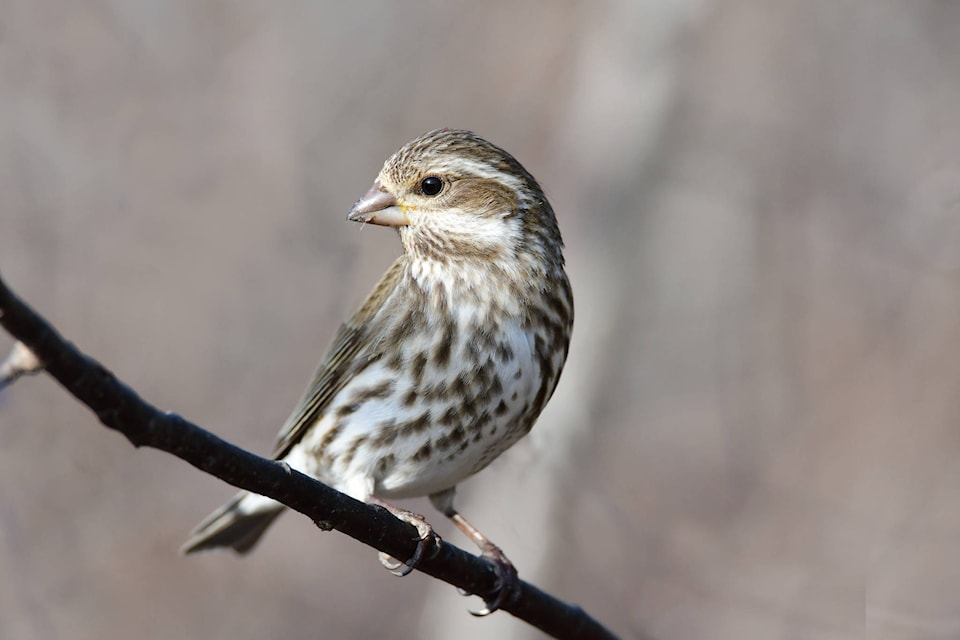While enjoying a morning coffee on my deck, I was delighted to observe a young purple finch.
It made its way shyly through the shrubs, and then landed on a nearby trellis before attempting to find a spot among the throng of scrappy pine siskins at the sunflower seed feeder.
It gobbled down a few seeds before retreating back to the safety of the nearby shrubs.
This is the first time that I have confirmed a successful nesting of these species on our property. It has been a treat over the past months to observe the adults regularly come to dine at my feeders, but in past years, I’ve usually seen them – or heard their beautiful warbling song – only for a few days in the spring.
It is heartening to know that they have nested here.
Purple finches are often confused with the now-abundant house finches — recent arrivals that may be outcompeting purple finches in some areas.
Although they are similar in size, they can be quite easily distinguished from each other. Male purple finches are a raspberry red, while house finches tend to be orangish-red.
Female purple finches have a well-defined white eyeline and are crisply patterned, while female house finches are quite dull with blurrier streaking.
Purple finches range across much of Alberta. They nest in conifers, but forage in deciduous forests, so prefer mixed deciduous-coniferous habitats.
Purple finches are mainly seed eaters, but will also eat some insects, soft buds, nectar (extracted by biting the bases off flowers) as well as berries and fruit.
They will eat unshelled sunflower seeds, but my observation has been that they prefer – like most feeder birds – shelled sunflower chips.
While purple finches are considered to be migrants, a few overwinter in the province.
Historical Christmas bird count records indicate that a few individuals occasionally spend at least part of the winter in central Alberta.
According to the Cornell Lab of Ornithology, the global breeding population is estimated to be about 6.4 million, with 92 per cent spending part of the year in the U.S., 66 per cent in Canada, and one per cent in Mexico.
Sadly, it appears that purple finch populations are decreasing. According to the North American Breeding Bird Survey, they declined by almost 1.5 per cent per year between 1966 and 2014, resulting in a cumulative decline of 52 per cent.
Let’s hope that the successful nesting in my area this year reflects a more promising future for the species.
Myrna Pearman is the biologist and site services manager at Ellis Bird Farm.
